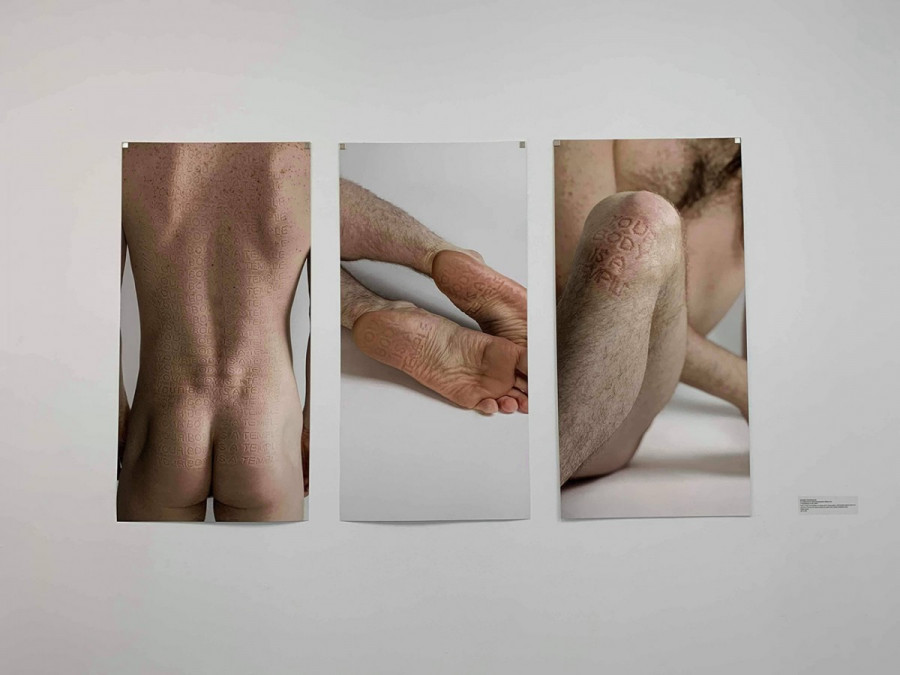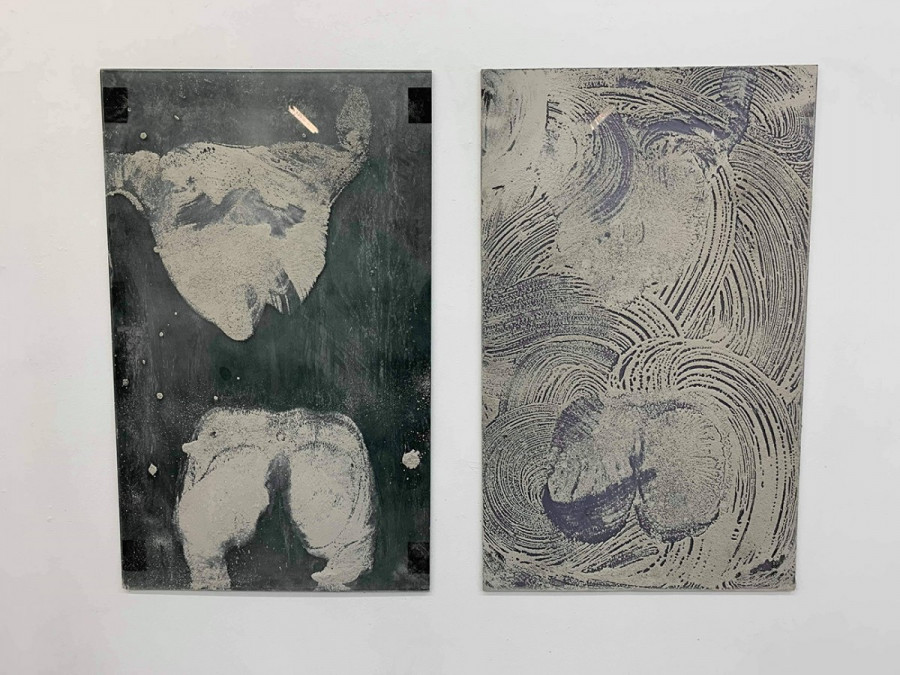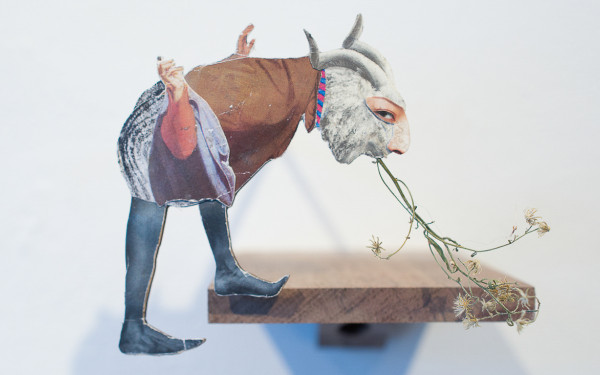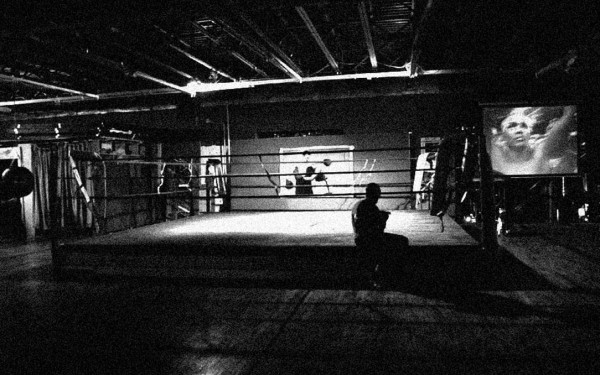‘Vulnerability Lingers’ at Art Matters
Embodied Exhibit Uses the Human Form and Sensuality to Create Art
Vulnerability Lingers is a carnal experience.
When the viewer takes their first step into the small exhibit space found on St. Catherine St. W., they are met with a blown up photograph of a bare bum.
Walk in closer, and the photographic piece is put into perspective; in a three picture photo series of someone’s nude behind, the heels of a pair of feet, and the knees of the faceless model, the words “Your body is a temple” are imprinted into the skin like when fingernails are pressed into palms.
Directly in front of the photo series sits a chair with clothes strewn across it, and a pair of shoes placed at the base, with the same message stitched into the clothes with glass beads. The curious piece, called 1:Corinthians:6:19, was created by Camille Charbonneau, in collaboration with photographer Stacy Lee.
Upon first observation of the piece, I thought the phrase alluded to the self-love mantra of thinking of your personal body as your temple, to cherish and care for yourself with delicacy.
But Charbonneau said the difference between the message of “Your body is your temple” versus “Your body is a temple” gives the works a whole other meaning.
The passage from the bible that is related to in the title of the artwork is synonymous with the impression from the piece.
Charbonneau read from their personal bible: “Oh, do you not know that your body is a temple of the holy spirit, who is in you, who you have from God, and that you are not your own, for you have been bought with a price, and therefore glorify God with your body.”
They explained that they created this piece, and the intricate artistic performance that went with it, to start the dialogue of body ownership for transgender folk. Charbonneau added that for those who are transgender or gender non-conforming, the alteration of their physical bodies is a crucial step to reassess ownership of themselves. However, the passage tells people that they have no right to change their bodies, because it never belonged to them to begin with.

“In this verse, it literally says that you are not your own, you do not own your body, […] which induces the idea that it’s lent, so you can’t apply changes,” Charbonneau said. “Your body is perfect the natural way that it is […] glorify it for God. It’s very disembodying.”
As a former mormon, Charbonneau hopes for this piece to challenge and encourage churchgoers to question this passage of scripture.
Parallel to Charbonneau’s works sat Maggy Hamel-Metsos’ artwork called Caught in the mid(s)t.
The piece has an abstract and enchanted quality to it.
Made out of concrete, soap and acrylic panels, the series of art looks like a nude woman submerged in murky waters; or whose back is pressing against the foggy glass door of a shower. Hamel-Metsos explained that this was the image she wanted to convey.
Using her own body as a tool, the artist performed a personal performance piece, while naked in the exhibition space, and artfully created the results.
“I have these six acrylic panels on which I do an emulsion of soap, […] so that they’re humid. Since my body is dry, I print whatever side of my body I want,” Hamel-Metsos said.

After that, she quickly takes the cement, powders it over the panel, and shakes it.
“The only thing that stays is the print of my body in that space, at that time, in this moment, me with myself,” she said.
The multidisciplinary artist’s main subject of the piece is the human trace.
“The way they are disposed in the gallery is actually the areas where I had done the prints,” Hamel-Metsos said. “So, you kind of get the sense that my body has left a charge in space; and this charge becomes visible because of the human trace.”
“I do it to reveal the ephemerality of being,” she continued. “One day, our flesh will turn into dust, and that is basically it, I’m representing the trace of my flesh with dust. It’s kind of like this metaphorical visual representation of death.”
At the same time, the piece is Hamel-Metsos’ attempt to transcend death by leaving a trace of her passage. She used concrete to solidify an ephemeral experience in order to give it a permanent quality, creating a kind of ambivalent existence.





5__600_375_90_s_c1.jpg)
